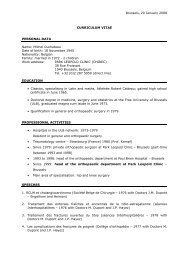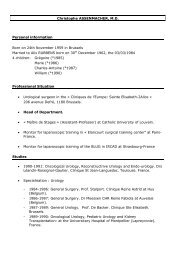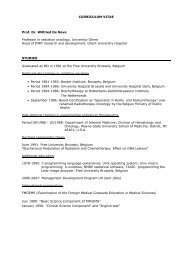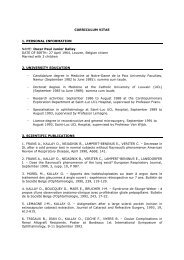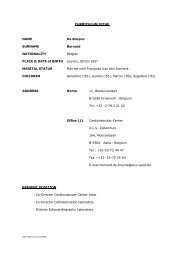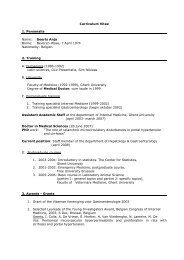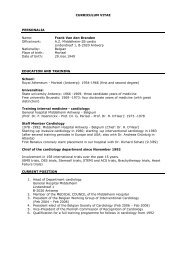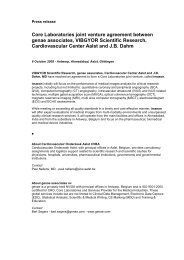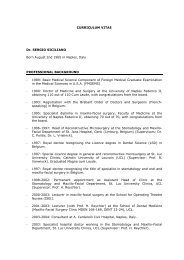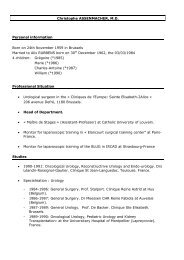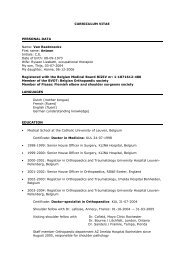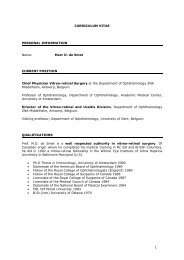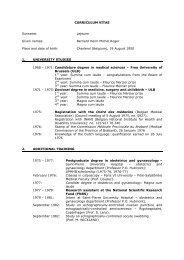Download PDF - HealthCare Belgium
Download PDF - HealthCare Belgium
Download PDF - HealthCare Belgium
You also want an ePaper? Increase the reach of your titles
YUMPU automatically turns print PDFs into web optimized ePapers that Google loves.
EMBRYO DONATION<br />
A couple’s infertility problem may also be due to a combination<br />
of physical factors that affect both the man and the woman. If<br />
standard IVF treatments (even using ICSI) fail or offer too small<br />
a chance of success, the transfer of a donor embryo into the<br />
woman’s womb may be the solution.<br />
NOT GENETICALLY RELATED,<br />
BUT DEFINITELY YOUR BIRTH CHILD<br />
Although neither the sperm nor the eggs used in this type of<br />
donation belong to the couple, and some people like to compare<br />
it with adoption, there is a fundamental difference between the<br />
two concepts.<br />
The embryo is donated by a couple who have had successful<br />
infertility treatment themselves. They donate an embryo and not<br />
a fully developed child.<br />
In contrast to adoption, the recipient couple go through the entire<br />
pregnancy process together in that the woman carries the donor<br />
embryo to full term. If everything goes well, she gives birth to a<br />
baby after nine months, during which period the ‘adopted’ embryo<br />
becomes her own child.<br />
This is every bit as true from the child’s point of view. From the<br />
very start of his or her existence, his or her entire life history is<br />
intimately interwoven with that of his or her parents, and there<br />
is no question of moving from one social, geographical or racial<br />
environment to another.<br />
89| The embryo bank<br />
89<br />
DONATION<br />
107




